In part one, we took at radio shows that were (for the most part) broadcast over major networks and began broadcasting in the 1940s. But a new age was dawning in American entertainment.
In the late 1940s headed into the 1950s, commercial radio drama was on the way out. Television was capturing the hearts of Americans, curious about the new box and the ability to see their favorite shows for the first time and watch movies from their living rooms.
For Religious Groups interested in radio, the decline was good news. Radio production costs fell exponentially. There also was an audience that would always gravitate towards the theater of the mind. As the Golden Age of Radio came to close, many of the most successful radio dramas that followed were created by religious broadcasters
There have been many shows that simply been forgotten by time. I”ve tried to cover as many as possible. If you’re aware of others, please share in the comments.
Moody Radio (1950s)
In the 1950s, Moody Radio in Chicago began making Juvenile Adventure stories, most prominent among them, Sailor Sam and Ranger Bill. Sailor Sam was a 15-minute adventure serial, set mostly at sea. So, it followed much the same model as previous sea serials such as Cruise of the Poll Parrot and Magic Island while Ranger Bill was landlocked and ran for half an hour. Both shows provided kids the same level of action packed adventures as was found in radio’s prime, while mixing in moral and religious lessons. The shows mixed educational content, adventure, and softly told religious lessons.
Complets sets of both shows are available at MoodyAudio.com. In addition, one episode per week is available for listening at HisKids.net and episodes of Sailor Sam can be heard every day Monday-Friday on Harbour Light Radio at 4:15 p.m. Eastern Time.
In more recent years, Moody has produced Fables of Faith, a program for younger listeners with animals as the featured characters.
Pacific Garden Missions (1950-Present)
Pacific Garden Missions launched Unshackled in 1950 to tell real life stories of people whose lives were changed when they were “unshackled” by coming to Christ. The show has remained popular for 61 years now. It is translated into ten different languages and airs around the world.
Every Saturday, PGM records the program before a live studio audience at Pacific Garden Missions, which provides a rare chance to see radio drama in action. The show provides a powerful promotional tool for the work Pacific Garden Missions does with the homeless from its home base in Chicago.
While scripts are at times preachy, the show’s retelling of real life stories has made it the the longest running radio drama ever with more than 61 years in the books. If the show lasts 11 more seasons, it will surpass Guiding Light as the longest running dramatic series of any sort.
The latest episodes of Unshackled are available in podcast at One Place. Pacific Garden Missions also offers an archive going back eight years on its website.
Salvation Army (1956-85):
The Salvation Army made its contribution to radio with nearly 30 years broadcasting, “Heartbeat Theater.” Unlike Unshackled, the radio production was not aimed at evangelizing for the Salvation Army, but rather at highlighting the Army’s work in communities as well as Its history. From Heartbeat Theater, listeners learned that the Salvation Army has its own missing persons division and the origin of the Organization’s ubiquitous red kettles.
The show originated from Hollywood and early episodes featured many actors who had appeared during the golden age of radio. However, rarely did Heartbeat Theater land big stars. Instead, those who had been character actors in the golden age (such as Peter Leeds) or down and out has beens (such as Tom Conway) were likely to find themselves starring in the plays.
In addition to promoting the Salvation Army, Heartbeat Theater took on controversial issues, even in its early years, dealing with Communism and the Mau Mau uprising among others. The show ramped up its portrayal of social issues and edginess in hopes of maintaining relevancy. The Salvation Army spent half of its media budget on the program, but by 1985, it went off the air.
Unfortunately, Salvation Army has done little to guarantee the preservation of Heartbeat Theater, although somewhere between 70 and 100 episodes remain in circulation among collectors and fans. Many are available at Timespast.
The Episcopal Church (late 1950s):
The Witness was a late entrant into radio and the Episcopal Church’s contribution. Unlike other shows mentioned, the Witness was 15 minutes in length rather than half an hour. The episodes were hosted by Robert Young, most famous for his lead role in Father Knows Best. Issues like child abuse, friendship, loneliness, sorrow, and crime were featured in the series. The opening message read by Young summarized the point of the series:
“In the normal course of most any day everyone of us is witness to matters of life and death. The way we involve ourselves in these vital matters makes our own lives worthwhile . . . or meaningless.”
The Witness featured top notch radio talent that was hard to come by including Virginia Gregg, Janet Walsdo (Meet Corliss Archer), and J. Carroll Naish (Life with Luigi) and Alan Young (The Alan Young Show and later Mister Ed.) According to the Digital Deli, the Witness mas made sometime between 1958 and 1960.
All 16 episodes of the Witness are available for download at the Internet archive.
In addition to this, the Episcopal Church and Young teamed up to produce another series of radio dramas which focused on the importance of church attendance and faith. Two episodes have been discovered by Rand’s Esoteric OTR and are available here and here.
CBH Ministries (1942-Present)
The Children’s Bible Hour began in 1943. The formula for the program was divided into four parts: Bible Question Time, Chorus Time, Bible Memory Time, and Bible Story Time. The dramas were simple stories that took fifteen minutes and were told by the friendly adults, Uncle Charlie and Aunt Bertha. The episodes were more sermons as stories. However, the program remained popular throughout its run.
In 1999, the ministry took a different direction, taking a new approach with a new generation. They reorganized as CBH Ministries and introduced a brand new contemporary drama series in, “Down Gilead Lane” which follows the life of the Morrison family.
The new series was described by Ministry Watch thusly, “One of the differences between ‘Children’s Bible Hour’ and ‘Down Gilead Lane’ is that in the former program the stories occasionally tended to sound like thinly-cloaked occasions for teaching good morals (as in a fable), while in the latter the stories tend to be interesting in their own right. In other words, ‘Children’s Bible Hour’ tended to preach spiritual truths; ‘Down Gilead Lane’ tends to portray such truths.”
The new series is now in its 12th season on radio. Episodes are available as Hiskids.net
Focus on the Family (1987-Present)
Focus on the Family took its first big steps into the world of radio drama with the launch of Adventures in Odyssey (originally Family Portraits and then Odyssey USA.) The show was intended to provide an alternative to Saturday morning cartoons.
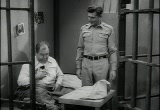 From the beginning, the show had a lot going for it. Particularly, in early years, AIO had some golden age magic going for it. The focal point of the show was John Avery Whitaker who ran Whit’s end. Whitaker was portrayed by Hal Smith (best known for playing Otis the Drunk on the Andy Griffith Show), later after Smith died, Alan Young would join the cast.
From the beginning, the show had a lot going for it. Particularly, in early years, AIO had some golden age magic going for it. The focal point of the show was John Avery Whitaker who ran Whit’s end. Whitaker was portrayed by Hal Smith (best known for playing Otis the Drunk on the Andy Griffith Show), later after Smith died, Alan Young would join the cast.
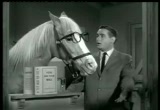 AIO, now up to its 700th episode while focusing on the same town and same characters produced a stunning array of scripts, ranging from straightforward family dramas to suspenseful mysteries, and science fiction-like stories. While the show remained popular, it wasn’t without controversy. There were times when some parents felt the show was dealing with too many heavy topics that they weren’t quite ready to talk to their kids about. Still, the show’s popularity has continued. Odyssey has had numerous spin-offs in books, home video, and video games.
AIO, now up to its 700th episode while focusing on the same town and same characters produced a stunning array of scripts, ranging from straightforward family dramas to suspenseful mysteries, and science fiction-like stories. While the show remained popular, it wasn’t without controversy. There were times when some parents felt the show was dealing with too many heavy topics that they weren’t quite ready to talk to their kids about. Still, the show’s popularity has continued. Odyssey has had numerous spin-offs in books, home video, and video games.
Odyssey has survived two nine month hiatuses tied to the deaths of the first two actors to play Mr. Whitaker. The show had a slightly retooled feel with its 2009 relaunch.
AIO Creator Paul McCusker led Focus to take on more radio projects. They created a series of three mini-series for The Last Chance Detectives. Focus on the Family’s Radio Theater came into being and took on a series of ambitious projects including adaptations of classics (The Christmas Carol, Ben Hur, Les Miserables among others,) Biographies (the Peabody Award winning Bonhoeffer: The Cost of Freedom and the Hiding Place.)
McCusker created a mystery mini-series called Father Gilbert which followed the career of a Detective Inspector who became an Anglican Priest. Perhaps, the most critically acclaimed productions were of two C.S. Lewis works, The Chronicles of Narnia (featuring Poirot’s David Suchet as Aslan) and The Screwtape Letters.
With the tight economy in recent years, most of Focus’ radio efforts outside of Odyssey have been put on hold. Radio Theater productions and Odyssey Albums are available in most online outlets. Recent episodes of Adventures in Odyssey are available at the Whit’s End website.
Insight for Living (2001-Present)
The genesis of the Paws and Tales series began with a children’s book by pastor and best-selling author Chuck Swindoll called, “Paw Paw Chuck’s Big Ideas In The Bible” which emphasized 12 important lessons from the Bible.
From this story book in 2001 came the series, “Paws and Tales” which featured a group of animal children (bears, a beaver, a weasel, and a moose among others.) Paw Paw Chuck has no grandchildren of his own, so he serves as an elder and dispenser of wisdom to the young cubs.
The episodes feature a musical number or two every episode. It was designed with a younger audience in mind, but the characters have some solid backstories that add depth to many episodes.
Several episodes have been adapted to home video.
The latest episodes are available at hiskids.net.
Others shows that I have little information on:
Life at the Pond: Another animal show, this one featuring on those that live close to water. This one is much more of a comedy wuth lessons worked in with humor.
Left Behind: In light of the popularity of the Left Behind books, a radio series was commissioned running 144 episodes over the length of the 12 books.
Jonathan Park: A kid’s adventure series, somewhat similar to Johnny Quest but focusing on creation science.
Danger is the Password: I’ve been advised this series existed and was a Christian mystery/suspense show designed with a juvenile audience in mind. However, I’ve been unable to find any information on it.
If you enjoyed this post, you can have new posts about Detective stories and the golden age of radio and television delivered automatically to your Kindle.
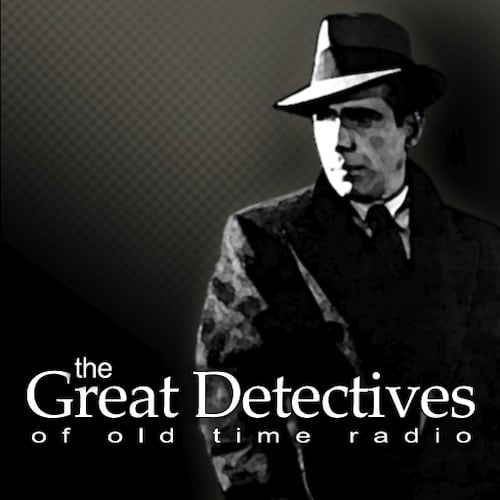
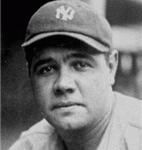
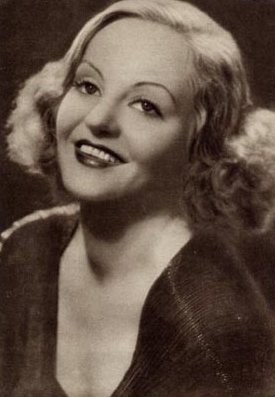 “The glamorous unpredictable Tallulah Bankhead” was the show’s host. Her voice was one of the most recognizable in radio. It was deep and distinct. She called her guests “darling.” Bankhead was best known as a stage actress on Broadway and in London. The highlight of her film career had been Alfred Hitchcock’s Lifeboat. Finding other movie roles that suited Bankhead’s unique personality was a challenge.
“The glamorous unpredictable Tallulah Bankhead” was the show’s host. Her voice was one of the most recognizable in radio. It was deep and distinct. She called her guests “darling.” Bankhead was best known as a stage actress on Broadway and in London. The highlight of her film career had been Alfred Hitchcock’s Lifeboat. Finding other movie roles that suited Bankhead’s unique personality was a challenge.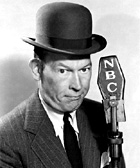 Portland Hoffa. Allen had had his own show for many years, but a combination of declining ratings, declining health, and the rise of television led to the end of his program.
Portland Hoffa. Allen had had his own show for many years, but a combination of declining ratings, declining health, and the rise of television led to the end of his program.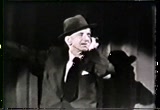 Jimmy Durante was also a frequent guest on the program. His mangling of the English language, self-depreciating manner, and jolly singing made him a delightful addition to the show.
Jimmy Durante was also a frequent guest on the program. His mangling of the English language, self-depreciating manner, and jolly singing made him a delightful addition to the show.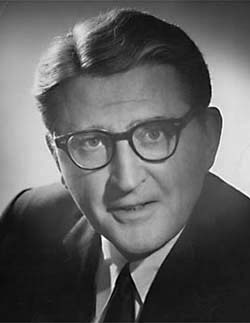 However, the musical delight of the show remained Meredith Wilson, the music director who was charged with a 40-piece orchestra. Wilson not only came up with great arrangements, the first season of the Big Show was punctuated with several original Wilson songs. Wilson’s creativity was not limited to music. In the only full Season 2 episode in existence, the cast performs scenes from Wilson’s novel, “Who Did What to Fedalia?”
However, the musical delight of the show remained Meredith Wilson, the music director who was charged with a 40-piece orchestra. Wilson not only came up with great arrangements, the first season of the Big Show was punctuated with several original Wilson songs. Wilson’s creativity was not limited to music. In the only full Season 2 episode in existence, the cast performs scenes from Wilson’s novel, “Who Did What to Fedalia?”